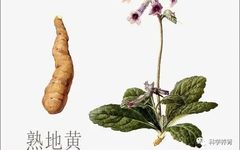Shudi Huang, also known as Shudi, is a medicinal material made from the processed tuber of Sheng Di Huang (Rehmannia glutinosa).
Speaking of the wonderful uses of Shudi Huang, there is a legend. It is said that Sun Simiao, at over a hundred years old, still traveled around.
One day, he came to a small village by a river and saw a family where everyone was over a hundred years old, yet they looked youthful and strong. Sun Simiao hurriedly asked them for their secret to longevity.
The family told him that they had no secret formula, but they simply insisted on drinking Shudi Huang porridge every day. Sun Simiao quickly asked what Shudi Huang porridge was, and the family explained that it was porridge made from Shudi Huang and rice, used in spring to harmonize the stomach and reduce fire, in summer to cool down and relieve irritability, in autumn to nourish yin and eliminate dryness, and in winter to nourish blood and dispel cold. They ate a bowl every morning.
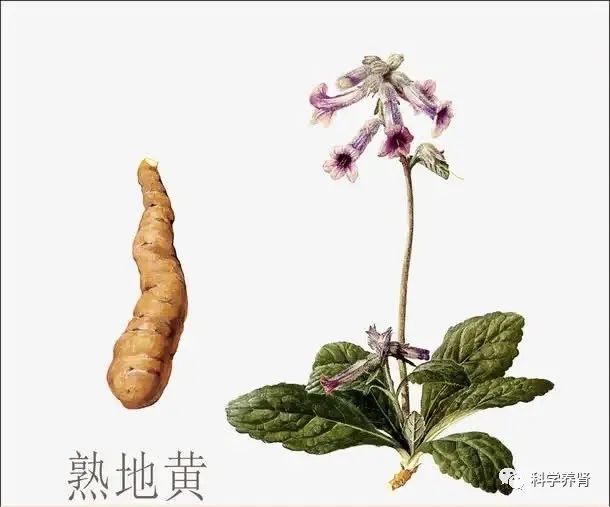
Sun Simiao then asked the family for a bag of Shudi Huang and, based on the characteristics of the herb and his lifelong studies, developed a processing technique of nine steams and nine suns for Shudi Huang. It is said that because he regularly consumed Shudi Huang, Sun Simiao lived an additional forty years, passing away at over one hundred and forty years old without illness.
Of course, Sun Simiao’s longevity was not solely due to his regular consumption of Shudi Huang, but Shudi Huang certainly contributed significantly to his health and longevity.
Why do I say this? Let’s take a look at the kidney-nourishing effects of Shudi Huang.

Kidney-Nourishing Effects
Sheng Di Huang is usually processed with wine, sand ginger, and dried tangerine peel through repeated steaming and drying until it becomes black, oily, soft, and sticky, resulting in Shudi Huang.
Traditional Chinese Medicine (TCM) believes that Shudi Huang is slightly warm in nature and sweet in flavor, entering the liver and kidney meridians, with effects of nourishing blood, enriching yin, and replenishing essence and marrow. The “Pharmacopoeia of China” states: “Shudi, steamed with wine, has a bitter taste that transforms into sweetness, and its cool nature becomes warm, specifically entering the liver to nourish blood.
Due to the liver’s bitterness and urgency, it is alleviated by sweetness, and it also warms the gallbladder, benefiting heart blood and further nourishing kidney water. It is suitable for internal injuries, insufficient essence, mental strain, blood loss due to worry, excessive desires, regulating menstruation, and childbirth.
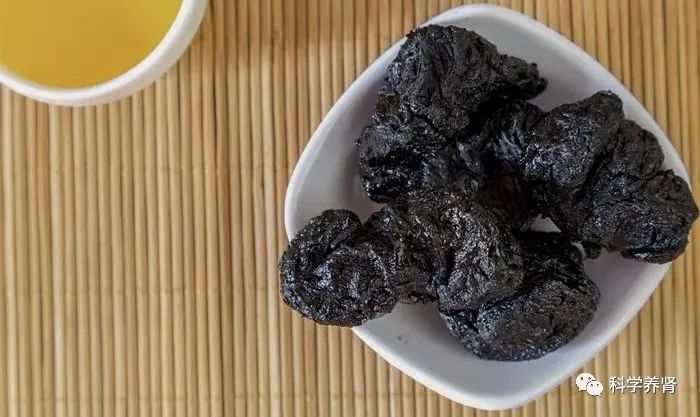
It calms the five organs, harmonizes blood vessels, moistens the skin, nourishes the heart spirit, tranquilizes the soul, nourishes true yin, and fills the bone marrow, making it a sacred medicine.” Li Shizhen in the “Compendium of Materia Medica” said that Shudi Huang “fills the bone marrow, generates essence and blood, nourishes the five organs, opens blood vessels, benefits the ears and eyes, and darkens hair,” treating “men’s five labors and seven injuries, women’s injuries leading to leakage, and menstrual irregularities.” It is evident that Shudi Huang is indeed an important herb for nourishing the liver and kidneys.
Shudi Huang is moist and enters the kidneys, effectively nourishing kidney yin and replenishing essence and marrow, making it a key herb for nourishing kidney yin. The ancients referred to it as “greatly nourishing the true yin of the five organs” and “greatly replenishing true water.”
It is often used in combination with Shan Yao (Dioscorea opposita) and Shan Zhu Yu (Cornus officinalis) to treat kidney and liver yin deficiency symptoms such as sore lower back and knees, nocturnal emissions, night sweats, tinnitus, deafness, and diabetes, as seen in the Liu Wei Di Huang Wan (Six-Ingredient Rehmannia Pill); it can also be combined with Zhi Mu (Anemarrhena asphodeloides), Huang Bai (Phellodendron amurense), and Gui Guo (Testudines) to treat yin deficiency with bone steaming and tidal fever, as in the Da Bu Yin Wan (Great Yin Nourishing Pill).
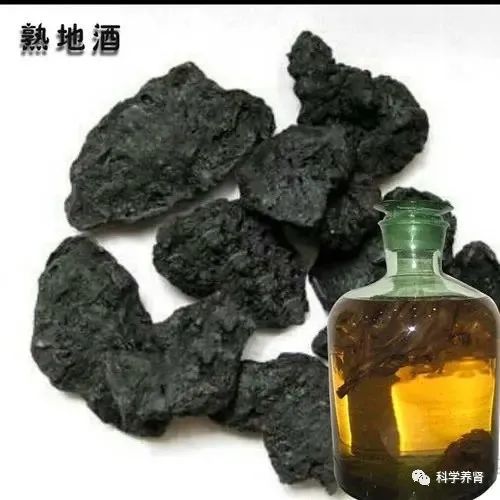
It enters the liver, can nourish yin and benefit essence to generate blood, and is often used with Dang Gui (Angelica sinensis), Bai Shao (Paeonia lactiflora), and Chuan Xiong (Ligusticum chuanxiong) to treat blood deficiency symptoms such as sallow complexion, dizziness, palpitations, insomnia, and menstrual irregularities, as in the Si Wu Tang (Four Substance Decoction);
if there is heart blood deficiency leading to palpitations, it can be used with Yuan Zhi (Polygala tenuifolia) and Suan Zao Ren (Ziziphus jujuba) for calming the spirit; if there is excessive bleeding leading to blood deficiency and coldness in the lower abdomen, it can be used with E Jiao (Colla Corii Asini) and Ai Ye (Artemisia argyi) for nourishing blood, stopping bleeding, warming the meridians, and dispelling cold, as in the Jiao Ai Tang (E Jiao and Ai Ye Decoction).
Dietary Guide
There are many ways to consume Shudi Huang, such as making porridge, soup, or infusing it in wine, all of which can nourish yin, promote blood, and replenish essence and marrow.
For example, Shudi Huang porridge can nourish kidney yin and liver blood, making it an excellent dietary therapy for patients with kidney deficiency, sallow complexion, dizziness, palpitations, bone steaming, tinnitus, night sweats, nocturnal emissions, lower back and knee soreness, and menstrual irregularities.
The specific method is: take 30 grams of Shudi Huang, wrap it in gauze, add 500 milliliters of water, soak it in a clay pot for a while, boil several times until the medicinal liquid turns brownish-yellow and fragrant, then reduce to a gentle heat, add 40 grams of glutinous rice and 10 grams of dried tangerine peel powder to cook into a thin porridge, and remove the Shudi Huang pieces.
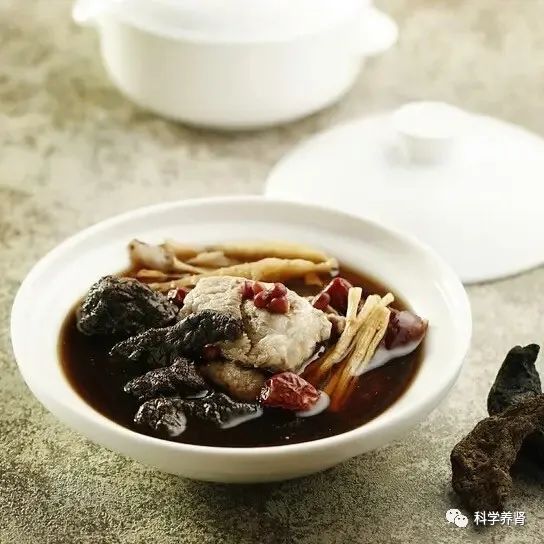
Shudi Huang can be used alone or paired with Dang Gui to stew chicken, treating blood deficiency and women’s menstrual irregularities. Shudi Huang combined with Huang Qi (Astragalus membranaceus) and Dang Gui can also be made into a medicinal dish that nourishes both qi and blood, known as Shudi Huang Qi Lamb Soup.
The method for this medicinal dish is simple: first prepare 750 grams of lamb, 20 grams of Dang Gui, 15 grams of Bai Shao, and 50 grams each of Shudi Huang and Huang Qi, along with 3 slices of ginger and 5 dates. Clean the lamb and cut it into pieces, blanch it in boiling water; wash the dates, Dang Gui, Bai Shao, Shudi Huang, Huang Qi, and ginger.
Then add all the ingredients together with water to make soup, and season to taste once the lamb is tender.
This medicinal dish is suitable for those with insufficient qi and blood leading to pale or sallow complexion, dizziness, fatigue, shortness of breath, palpitations, and poor appetite; or for those with insufficient kidney yang leading to cold limbs, lower back weakness, and facial pigmentation; or for those with neurasthenia, anemia, nephritis, and post-illness qi and blood deficiency, and kidney yang deficiency.

If Shudi Huang and Gou Qi Zi (Lycium barbarum) are infused in white wine to make Shudi Huang wine, it can replenish essence and blood, addressing issues such as forgetfulness and hair loss.
When infusing Shudi Huang wine, note that the ratio of Shudi Huang to Gou Qi Zi is 2:1; chop them, place them in a gauze bag, tie it tightly, and soak it in the wine. Remember to shake it once a day, and after seven days, change to once a week.
After twenty days, it can be consumed. After finishing, the medicinal residue can be soaked again in 500 grams of white wine, and after fifteen days, it can be consumed again. A small cup daily will yield significant effects.
Warm Reminder
Shudi Huang is a nourishing medicine, but there are many precautions to consider when consuming it.
Firstly, do not use copper or iron utensils for processing and cooking;
Secondly, avoid eating radishes, the three whites (white onion, white leeks, and white garlic), and various animal blood while consuming Shudi Huang;
Thirdly, patients with typhoid fever should not consume it, and those with spleen deficiency, phlegm, and qi stagnation should use it cautiously.

One branch of pear blossoms presses the begonia
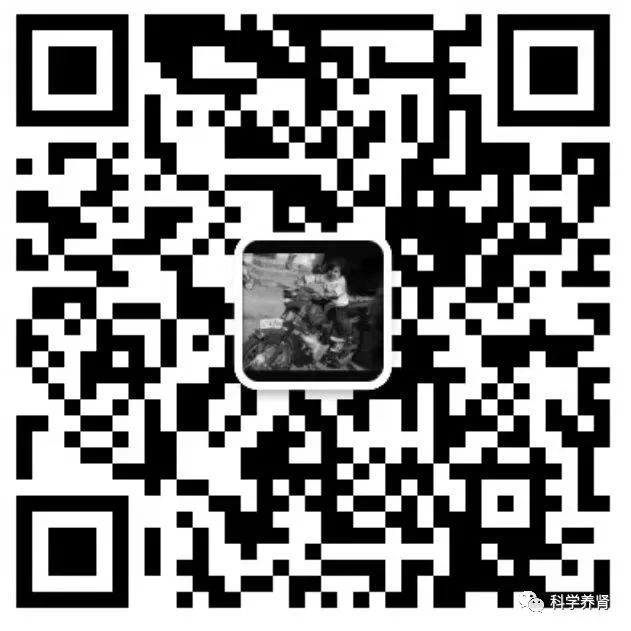
Long press to identify the QR code
Follow us
Receive kidney-nourishing recipes and massage tutorials
END

